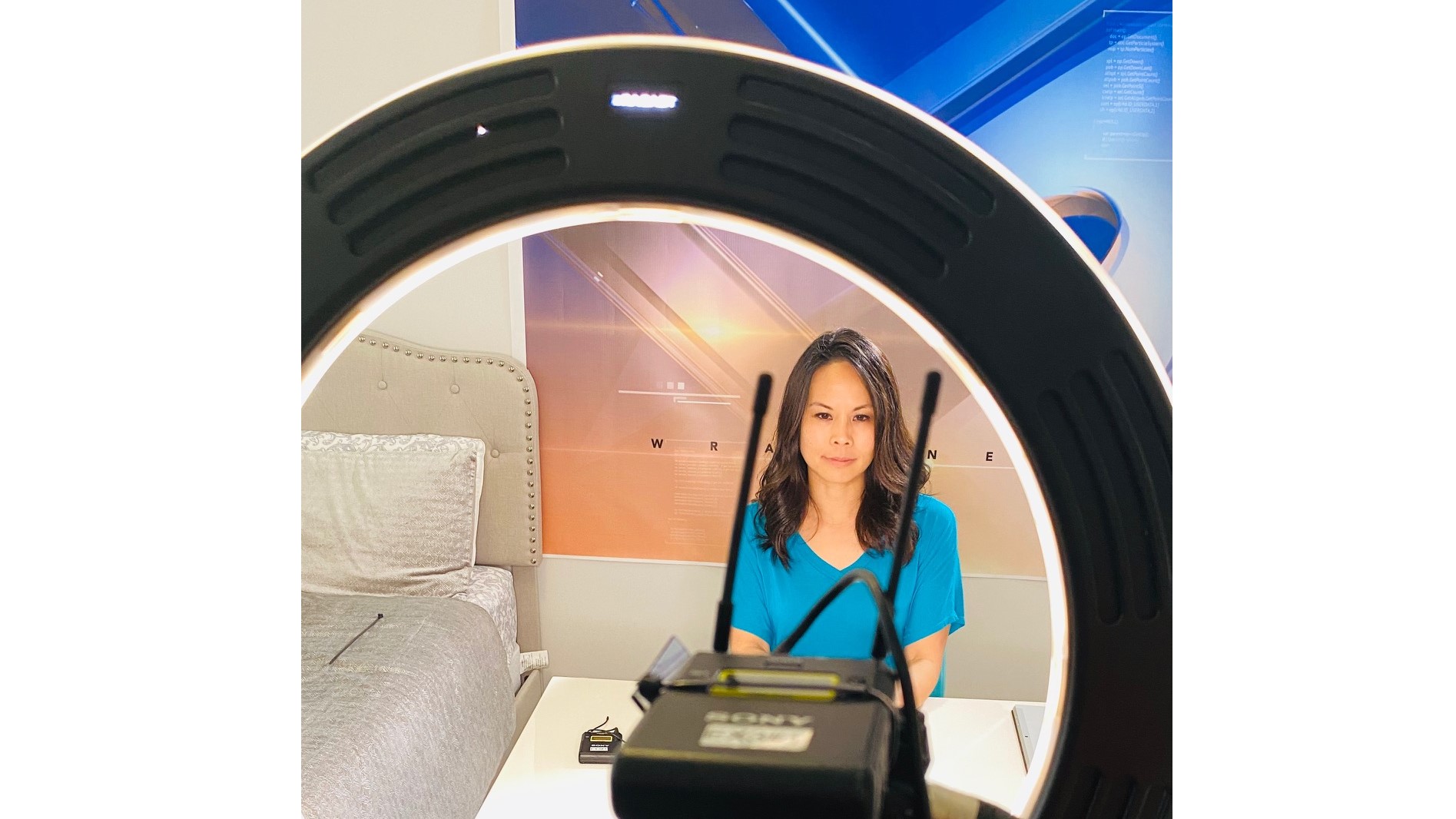Meeting the Challenge of Lighting for Home Broadcasts
Social distancing has required new ways to set up a shot

Social distancing has become the normal practice all around the world for the past few months. With it being so crucial for our health and our future to stay at a distance from one another, being on set with a crew has not been an option. The industry, for those in film and television, has mostly been shut down in major cities. But news reporting, as important as it is for delivering information during a pandemic, has to continue.
DIFFERENT SETUPS
As I have tuned in to see how networks are handling it, I have noticed several individuals are live from their homes recording with a static or robotic camera to bring us essential information. It has definitely called for creativity in finding an interesting frame in a room with plenty of natural light away from noise. Even daytime and late night talk show hosts are shooting their shows at home. Ellen Degeneres and Jimmy Kimmel, for example, have a key light or two set up to bring up their exposure and shape their faces in their home settings. Anchors for different networks sit in their living rooms with an LED panel pointed at them for balance with the bright windows on screen.
Many reporters already know how to improvise and make things happen fast from being out in the field. In general, simple ENG lighting setups have come into play for these situations—think of an on-the-go ENG package. It would include a couple small LED panels, soft boxes, stands and shaping tools. In most of what I have seen, unless against a specific backdrop, the subject presents from a room that already supplies ambient daylight so daylight LEDs and ring lights are a good match. Even a small onboard camera light does the trick as a key light for some home broadcasts, while lamps and other in-house lights decorate the background.
PLUS: Has Remote Production Changed Production ... Forever?
I have noticed that some talent has the luxury of space, so they are able to place the lights a little further away to either soften or shape better, while others are stuck in a small studio space and may have the light directly pointed at close proximity. Others have figured out to bounce a light into a wall to soften the return if there isn’t much space to work with.
SETTING UP AT HOME
To set up an at-home broadcast, a production assistant simply drops off the gear for the anchor at their house. Then, through a video conference call, the crew assists them in getting everything up and running. However, some crew members have had to enter the homes of these journalists and set up more complicated equipment at the start, especially when control over the camera and lights needs to happen remotely with a separate crew. DMX control over lighting, robotic cameras, greenscreen and teleprompter all have required a safe, small crew to set up.
Some reporters don’t have a gear-heavy system. They’re reporting from their laptop or phone cameras for their segments and just lighting smartly with what their space has to offer. They avoid any toplight, adjust their screen brightness and turn off unnecessary lights in the room.
Crews having to conference in have been an adjustment. The inability to be hands-on for a shoot and to only be able to communicate verbally about how to execute is strange since working on set is such a physical job. The other aspect that is different is that, on a video conference call with the crew, everyone is in on the same conversation. The producer cannot have a separate conversation with the assistant director—everyone is listening to everything.
There is a strong belief that a lot of these new practices when shooting news segments will still be implemented when crews do get back together—masks, sanitizing of equipment, minimal crew members and physically standing 6 feet apart from each other as often as possible. We see this in the broadcasts that are not at home as well. Reporters sit at opposite sides of the table with the crew in the other room. Camera operators are far back. We definitely won’t go back to set the same way we used to.
The need to shoot to share information during a pandemic has really made us think about the essentials and there will most certainly be strict precautions taken when we return to set in the future. The compact ENG style of shooting will be used wherever it can be to continue to keep workers in film and television safe.
Get the TV Tech Newsletter
The professional video industry's #1 source for news, trends and product and tech information. Sign up below.
